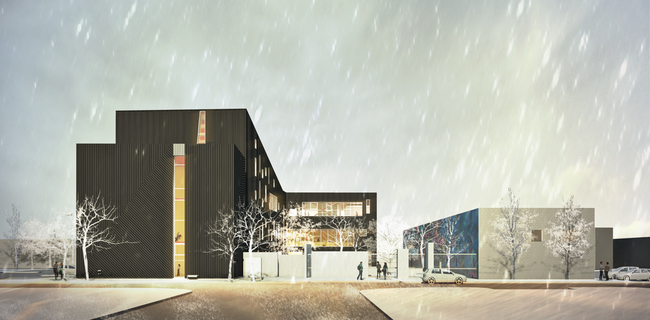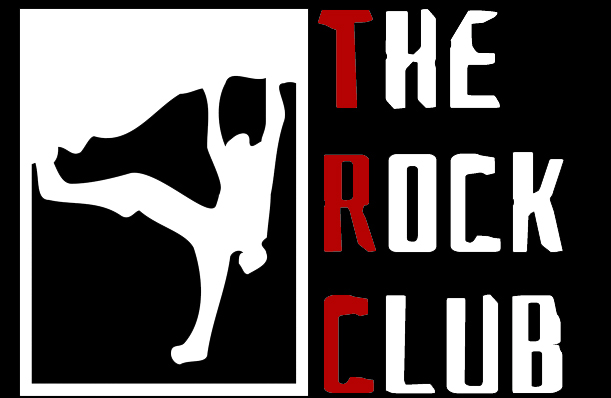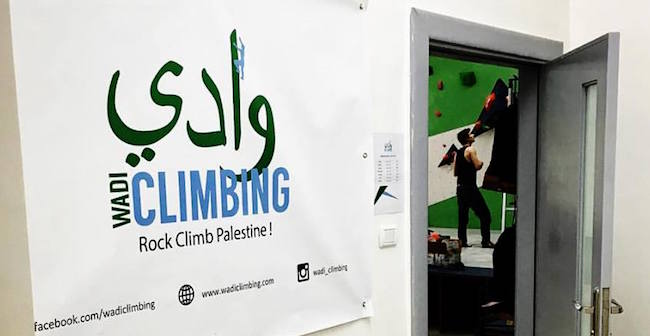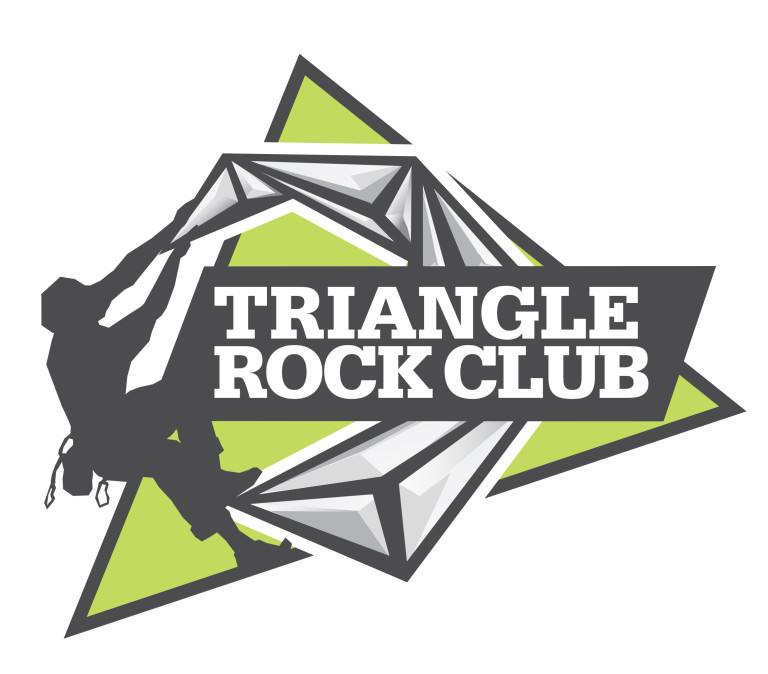- Over 15,000 square feet of custom climbing walls designed by Elevate
- Designed with features to accommodate everyone from beginners to experts
- Top rope, lead walls, and Auto Belay’s featuring sustained overhangs, roofs, slabs and routes up to 40 feet
- 5,000 square feet of stand-alone bouldering
- Training features including system boards and campus boards
- Fitness center with cardio equipment and free-weights
- Multipurpose room for yoga and fitness classes
- Community area and Pro Shop
- Lockers and bathrooms with showers
- Birthday Party room
- Classroom that can also be rented as event space
New KC Climbing Gym Opens
Opening in North Kansas City, Missouri this week, RoKC is the newest gym to enter the growing midwest climbing scene. Kansas City is bursting with climbing gyms; there are currently five gyms, two of which are bouldering-only. And two more climbing facilities are expected to open later in 2016, Apex Climbing and Ibex West, both located in South KC near Overland Park.
RoKC’s amenities include:
A Lifestyle Climbing Gym
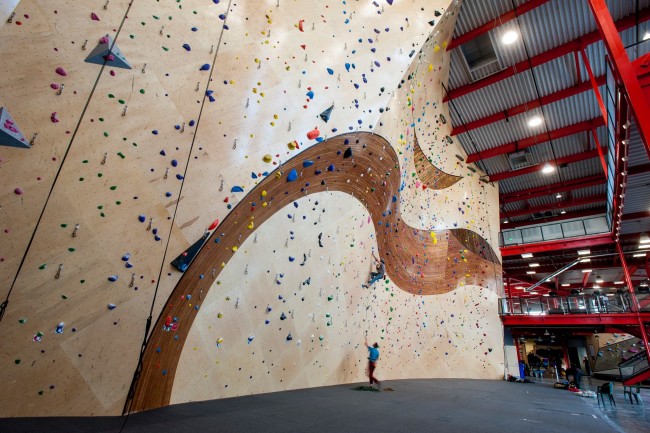
The Beginnings
The Front brand was started in 1990 by climber Dave Bell who opened The Wasatch Front Body Shop, nestled in the heart of the outdoor climbing mecca of Utah. The roughly 25-member cooperative was the first climbing facility in Salt Lake City, and it was indeed located in a former auto-body repair garage. “There were still tires on the ground, and climbers walked out with black on their noses,” says Mike Uchitel, former owner of The Front. Through a few change of hands, The Body Shop closed and reopened in a new location as The Wasatch Front Climbing Gym. The gym was an upgrade from a glorified car shop with climbing holds, yet Uchitel first purchased The Wasatch Front precisely with the intention of closing it down. The sport of bouldering was growing, and Uchitel wanted to try a bouldering-only gym, a novel idea at the time. “We wanted to step it up, to give Salt Lake City a facility that was not just some chalk-filled, shitty little cave,” says Uchitel. “Salt Lake was the ultimate place to risk an endeavor like that because the bouldering in Utah is unbelievably fantastic.” In the summer of 2000, Uchitel opened The Front Climbing Club in spectacular fashion, hosting the first bouldering competition of the legendary Professional Climber’s Association (PCA). The $20,000 cash purse attracted roughly 100 of the best names in climbing from all over the world, as well as nearly six times the legal fire code in spectators, with more fans peaking through the windows from the parking lot. From these seeds sprouted the culture of The Front: a sociable community of beginners and experts who are passionate about rock climbing. “For the people who are in the know, it’s almost humbling. For people not in the know, it’s just an incredibly great and inviting facility,” says Uchitel. “It’s in the walls, and it gives everybody that feeling: we’re doing what we love, why would we possibly be dicks?”The Transition
Besides managing The Front and guiding the PCA, Uchitel was also partial owner of Pusher, Cordless and S7; businesses which operated just down the street and provided The Front with the latest climbing holds, crash pads and apparel. After working 12-to-16 hours per day, seven days a week, Uchitel was getting burned out. One January evening in 2005 while closing the gym, a member who had climbed there for about two weeks approached him, offering suggestions for how the gym could be run better. Uchitel told the man to buy the gym and implement those changes himself, and he put the keys to the building on the table! A month later, that man, Dustin Buckthal, was the new owner of The Front. “Dustin found me at just the right time,” says Uchitel. “And to his credit, he implemented all those ideas he had. He was a better gym owner than I ever was.” In addition to improvements in day-to-day operations, Uchitel also cited Buckthal’s staffing abilities as critical to his successful transformation of The Front into a full-scale climbing gym. “Dustin hires nice people who continue to create that social atmosphere and understand the history of that town and gym,” says Uchitel. As the present owner in the gym’s long lineage, Buckthal is not only investing in a gym but a climbing community with a deep history and a rich culture. It is this culture which guided The Front expansion, an addition intentionally designed to account for the outdoor cragging and tight-knit community of the authentic climbing lifestyle sought by its members.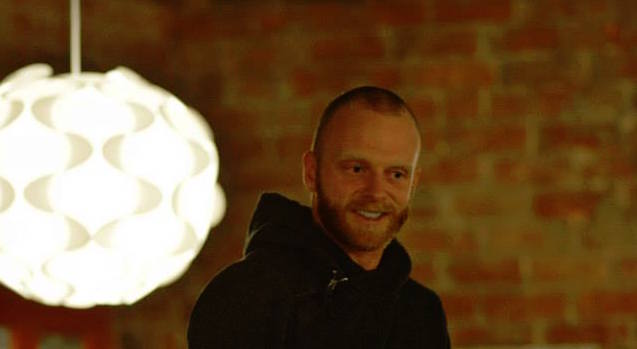
The Philosophy
The traditional perspective on commercial climbing gym success suggests a strong, positive correlation exists between climbing surface area and profit. While maximizing climbing area may increase revenues at some gyms, Buckthal had a more progressive idea in mind for The Front expansion which emphasizes allocation of space for purposes other than climbing. Our design philosophy was really created by how the original Front was built,” says Buckthal. “The goal with the expansion is to create this oasis in the city, this space to not only climb but hang out and socialize.” To design and build a social space with an outdoorsy feel, Buckthal teamed up with a talented team of experts who were no strangers to the surrounding climbing community: contractor Mike Menlove, owner of Menlove Construction and father of Salt-Lake-born rock climber Portia Menlove; longtime Front member and skilled architect Hannah Vaughn, now with the architecture firm MHTN; and of course climbing wall manufacturer Vertical Solutions of which Buckthal is co-owner. Partnering with a dedicated local team created internal perseverance to withstand project setbacks and united the brains and tools necessary to reconstruct a very particular gym environment. Together they came up with a design that balances soaring climbing walls with intimate social spaces. “That socialization, that comfort space, allows people to meet and build relationships,” says Buckthal. “That’s the basis of trying to become more than just a place to get your pump on. Vertical Solutions likes building authentic and engaging spaces for people who live the outdoor lifestyle.”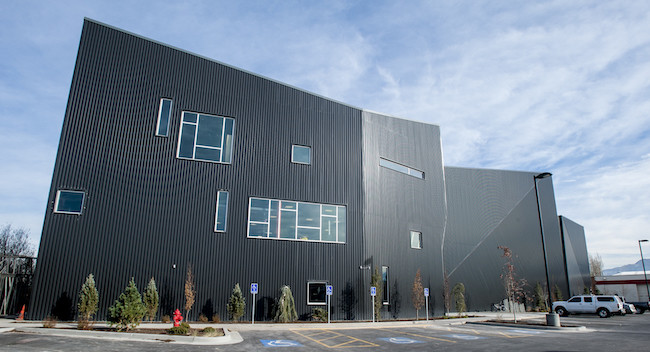
The Specifications
The modern three-story expansion clocks in at roughly 35,000 square feet, a sizable addition to the existing 15,000 square-foot gym. Yet only 25,000 square feet of surface area is devoted to actual climbing. Here is a quick breakdown of the layout: First Floor Upon entering the gym, the first area seen is the extensive retail shop. Since gym climbers investing in living the climbing lifestyle need a handy place to buy gear for indoor and outdoor excursions, The Front has invested heavily into retail at both its Ogden and Salt Lake locations. Past the merchandise and front desk, geometrically designed bouldering walls and curvy route climbing walls that rise up to a whopping 70 feet dominate the main stage. Bathrooms have showers, lockers, and – within the next few weeks – saunas. Second Floor For a climbing gym to meet all the fitness needs of the modern climber, resources must be provided which supplement climbing walls with additional equipment for a comprehensive workout routine. That is why Buckthal devoted the entire second floor of the expansion to training. Free weights, cardio machines, hangboards and 20, 30 and 45-degree walls adorn the second floor. This pump zone is a gym within a gym, only one with scenic views of the Wasatch Front and Oquirrh mountains. Third Floor Although interior construction is just beginning, the third floor will fulfill most of the social goals of the expansion. Besides executive offices, the top floor will also host three wooden floor studios for pilates, yoga and spin classes, as well as a climbing space for instruction, beginners and groups. The highlight of the third floor, however, will be a restaurant and communal lounge which will overlook the route area. This social space will be outfitted with comfortable chairs and tables for members to relax, do work, answer emails and converse with one another while enjoying a cozy meal and drink. Typically, climbing gym restaurants have not seen much success. Gyms may offer a few snacks, but the vast majority leave dining to the professionals. A menu of “evening eating” at The Front comprising beer, wine and shareable post-workout foods may yet buck the trend. For Buckthal, though, another revenue stream is not the goal. Regardless of profit, the cafe plays a role in the overall goal of the expansion. “It would be great if the cafe is a profit center, but the first goal is that it supports the social objectives and has a positive effect on membership retention,” says Buckthal. “We want to create a space where people want to hang around and strengthen social bonds. There are few ways that do this better than sharing food and drink.”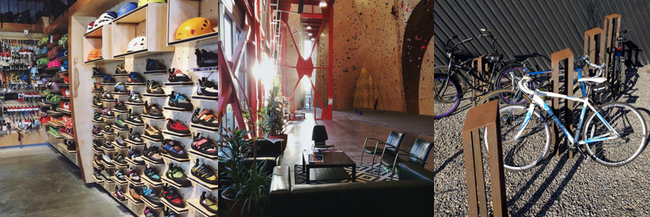
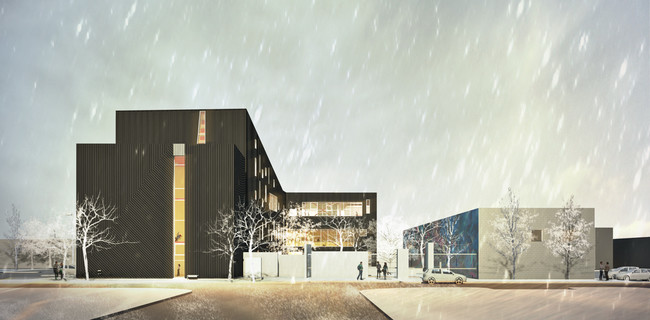
Palestine’s First Climbing Gym
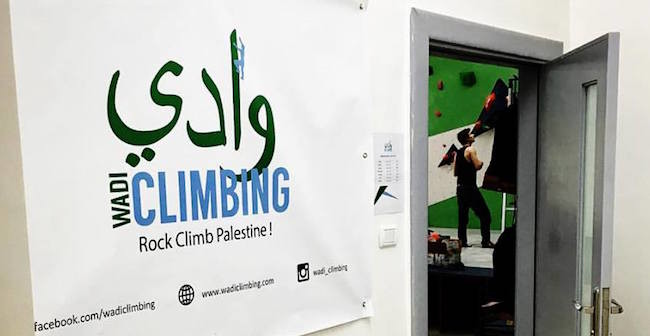
The Beginnings
The seed for Wadi Climbing was planted back in 2012 while Harris and Burns were studying abroad in Jordan. Taken by the burgeoning local climbing scene, the duo purchased memberships at Climbat, a large gym in the Jordanian capital of Amman, where they were immediately inspired by the way in which the gym functioned as a social centerpiece for the community. Trips to crags in Jordan, Lebanon, and Palestine followed, and it wasn’t long before their wheels started turning. “One of the things we noticed when we were first visiting Palestine was the lack of social spaces that revolve around health, activity, and community,” Burns said in an interview. “We travelled to Ramallah a couple of times to do market research and everything we saw indicated a climbing gym would be successful.”Building Community
Success for any gym operator is dependent on getting people through the door, which is an easy task when there is a large, dedicated climbing community already in place. Boulder, Colorado, for instance, is able to sustain four large-scale gyms within blocks of each other thanks to one of the most serious climbing scenes in the country. Ramallah, on the other hand, is a completely different story. Wadi’s solution was simple: create the community you want to serve. For nearly two years Burns and Harris split their time between developing new climbing areas in around Ramallah and starting a guiding service to take interested participants to these areas. With assistance from travelling climbers and what few local climbers there were, the duo bolted over 100 routes on three different crags, all within fifteen minutes from Ramallah. “The cliffs are relatively short but the limestone is solid and fun to climb on,” Burns said of the area’s rock quality. “We started taking ‘Intro to Climbing’ trips to these crags and it took off.”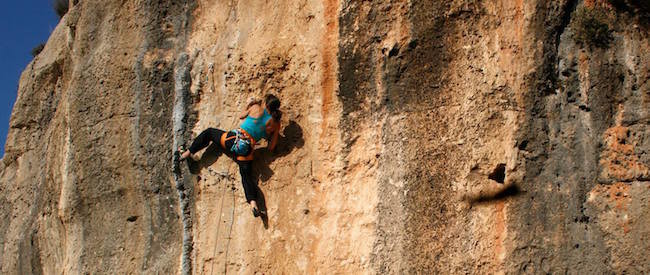
Partners in Climb
Working with Wadi Climbing as full partners are Lara and Joe Grosjean, operators of City Rock climbing gym in Colorado Springs. As patrons of City Rock years ago, Burns and Harris had befriended the Grosjeans, and when they developed the idea for Wadi Climbing they ended up working with the Grosjeans as consultants on the project. Burns elaborates on the progression from friendship to partnership by recalling that they would frequently meet to discuss what it would take to run a climbing gym. “They were always helpful and interested and one day they suggested that they would like to be involved,” Burns said. Once a location was found and funding secured, the Grosjeans began their commitment to Wadi Climbing. Together with their three children, they temporarily relocated to Ramallah in January 2016 to oversee construction of the facility. Along with manufacturing the walls, the couple will be involved in nearly every aspect in the early days of the gym, including daily operations and routesetting.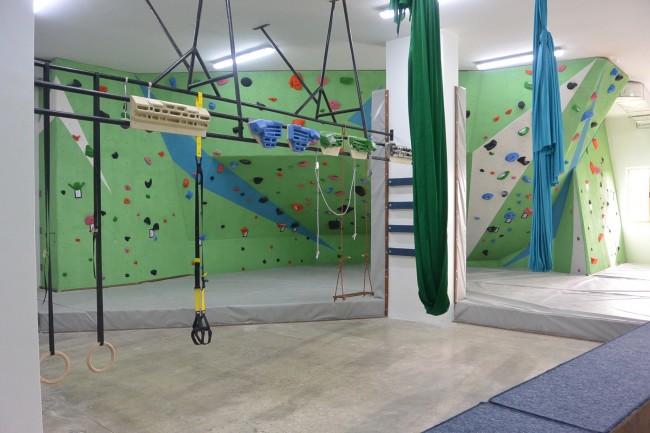
The Facility
While nearby Israel has a healthy climbing community and upwards of twenty gyms, the market in Palestine is hardly comparable. This required Burns and Harris to look to other sources of inspiration for their gym. “Fitness gyms, mixed martial arts, and Crossfit have become extremely popular in the last five years,” Burns said. “We have focused more on learning from those type facilities.” (The Crossfit craze, it seems, knows no borders.) Wadi Climbing fits into the mold of a small, low overhead, bouldering-only gym that has become de rigueur in the US and parts of Europe in the past few years. With 1,400 square feet of bouldering terrain, the gym will feature hangboards, a campus board, a gear shop, and a kid-oriented ‘adventure trail’ obstacle course. For the first months of operation, staffing will consist entirely of the two owners plus one full-time employee and a couple of part-timers.The Future
Though it is very early in the process and all focus is on opening the doors, the Wadi team remains dedicated to expanding and enriching the local community. With knowledge acquired in the early days, improvements to existing guiding and education programs will be made, including additional gym infrastructure that aims to supplement the social aspect of the facility. Burns described Wadi’s place in the Ramallah community as, “An awesome hangout and training space for those girls and guys that are hooked on climbing.” This mode of thinking falls in line with other modern gym operators around the world who place a great emphasis on social workspace and community building. Expansion is another possibility though one that may be a ways off. If their model works in Ramallah, Wadi Climbing could easily capitalize on the growing Middle East climbing scene by spreading smaller gyms throughout Jordan and Lebanon. But first, the duo is concentrating on increasing the terrain at the current facility by adding rope climbing to the mix. The opening of Wadi Climbing will put Palestine on the map of countries with climbing gyms, but more importantly, it will signify the extension of the global climbing community. Regardless of financial outcomes and future expansion, the foundation that Wadi seeks to lay will provide a platform for future climbers to explore and engage in the sport in an area of the world not often thought about in climbing circles.Heated Voices in Zoning Fight
After an applicant verbally sparred with opponents last week at a public hearing of a county zoning appeals board near Fort Wayne Indiana, board members voted to give more time to the operator of a proposed climbing gym.
Acording to the Journal Gazette, applicant Derek Wetli, sought a use variance to build and operate a new sports facility on a residential property Wetli and his wife own since 2009.
The facility would sit on 2.78-acres and would consist of a 4,800-square-foot manufactured steel building that would contain climbing walls with 12,900 square feet of climbable space.
Because the facility requires a 50-foot height, Wetli proposed digging the foundation down 10 feet to comply with a 40-foot height limit. Start-up costs were placed at $857,000.
Wetli told the Journal Gazette the structure would serve as a nonprofit center for recreational climbers as well as emergency personnel who might find the skills useful in their work. It also would certify instructors and offer programming for nonprofit youth groups.
The closest similar facilities are in the Indianapolis area, which now has three climbing gyms.
He said he wanted to “start small” with the aim of getting a larger commercial recreational facility in Fort Wayne and scaling back the use of the smaller one to educational purposes.
One person at the meeting supported the plan. But more than a half-dozen nearby residents opposed it in written correspondence or at the meeting. They said it would bring light, noise and more traffic to an already crowded two-lane road in an area scheduled for additional residential development and would decrease surrounding property values.
They also said Wetli had provided them different information than he gave the board or none at all. One questioned whether the applicant had sufficiently investigated other commercial sites and lined up sufficient partnerships for the project to work.
“It’s a residential area and has been a residential area for years,” said one resident, David Seel. While the idea is “commendable,” he said, “I don’t think it fits with the area. … I don’t think this is the place to put it.”
Wetli said choosing another location would be an “unreasonable hardship” because he is a stay-at-home father of two children, ages 3 and 5. Other homes along West Hamilton Road contain businesses, he said.
The two sides left the meeting room with raised voices.
The Allen County Department of Planning made no recommendation on the project, and board members at first proposed rejecting it. They then voted to resume the hearing at the next meeting so Wetli and neighbors can get together and more evidence can be presented.
Shaping an Industry

A Tumultuous Beginning
In 1996, climbers Ian Powell and Ty Foose combined their artistic talents and routesetting experience to form eGrips, a hold company devoted to giving routesetters the tools they needed to push the creative boundaries of indoor rock climbing. Foose, one of the founders and long-time eGrips shaper, told CBJ that the goal of eGrips was to provide “original and unique designs that were artistically beautiful, exceptionally well crafted, and perfectly shaped with climbing movement and tendon comfort in mind.” For two years, Powell and Foose shaped holds, poured molds, sanded the edges, and shipped their product to gyms around the country. Their shapes were innovative, durable, and designed with creative routesetting in mind. Gyms and routesetters snapped them up. In 1998, the duo sold eGrips to legendary grip maker, Pusher. Unfortunately, Pusher decided to produce their holds using a weaker, more brittle mixture, leading to a drop in product demand. “It pretty much tanked the brand,” said Foose. “Less than a year later, [Pusher] didn’t want the company anymore, so they loaded all the molds onto pallets and mailed them back to us.” By that time, however, Powell and Foose had both moved on to other things. The molds that had defined eGrips were stuffed under a trampoline at CATS gym in Boulder, Colorado and would have been forgotten had it not been for demand from nostalgic routesetters. Two years later, around 2000, Jessica Franco revived the eGrips name by founding Choke Holds in order to manufacture and distribute eGrips products around the country. “eGrips would not exist today if it were not for Jessica. She provided the vision, effort, and stability the brand needed to continue after it was abandoned by Pusher,” said Foose. For the next few years, Franco and Foose worked to find a manufacturer who would pour eGrips holds according to the company’s standards. This search led eGrips team to Chuck Demarest, one of the principle scientists and driving forces behind Aragon Elastomers, who worked with them to formulate a new polyurethane mix for pouring climbing holds, which is the industry standard today. “For those few years, my primary task was developing an efficient process for making molds, hollow backs, and castings and training the staff at Aragon how to consistently replicate the quality we demanded,” said Foose. By 2004, Franco and Foose were pushing eGrips in the direction that would influence the industry over the next 12 years.
Innovation
Continuous innovation and creativity have been key factors in the success of eGrips. According to Foose, “Many things that we take for granted as ‘standard’ are originally eGrips innovations. Casting holds in urethane, using hardened washers, employing professional mass manufacturing techniques … bolt on volumes with integrated t-nuts, geometric patterns as texture on holds – these were all first introduced by eGrips.” Among these considerable advancements in climbing hold design, the most influential may be their role in the development of modern polyurethane hold production. In the early years of routesetting, heavy holds, brittle mixtures, varying textures and wildly different shades of the same colors were standard. The modern convention of light-weight and durable plastic holds, standard hold colors and uniform textures are all a result of the collaboration between eGrips and Chuck Demarest at Aragon Elastomers. The development of a polyurethane tailored specifically for the needs of hold design has allowed eGrips to produce new, large shapes and features that would be almost unimaginable 15 years ago. The Main Dish, the Bubble Wrap Big Wave, the Myorcan Double Tufa Pinch, and the Foose Weave Beach Ball, are all staples of modern climbing gyms and competition routesetting that would not be possible without the advent of the modern polyurethane mixture. Creative, dynamic features have been made possible through this process, and it has come to define the direction of American routesetting. Along with their polyurethane mixture, eGrips is known for being one of the earliest producers of dual-texture holds. Dual-texture allow routesetters to be more precise with the movement they force because they feature only one true surface with usable friction. (Voodoo Holds is regarded as the first to market dual-tex holds with the launch of their Tallus line in 1993 and the brand has been influential in pushing texture innovation. They also experimented with urethane formulas during the early 1990’s.)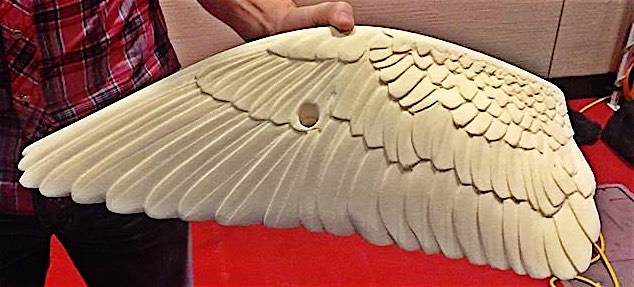
Evolution
Great Trango Holdings Inc., the company that owns climbing and outdoor brands such as Trango, Tenaya, and Stonewear, saw potential in eGrips and acquired Choke Holds in 2004. “eGrips revolutionized the climbing gym world and routesetting by introducing a material that was substantially better than anything else that was on the market,” said Chris Klinke, President of GTHI. He added, “Jessica Franco was the driver behind creating a more robust infrastructure to help fill the growing need for professional shapes for the growing climbing wall market.” Trango was a company with considerable manufacturing and distribution resources, while eGrips had the innovation and creativity to influence the future of a budding industry. According to Foose, “eGrips was growing on its own, but joining with Trango and taking advantage of their infrastructure and economies of scale was the next logical step for the development of eGrips.” Trango sought to help grow the company while respecting their vision, to be a place “where artistic expression and climbing meet for shapes and routesetting,” said Klinke. Chris Danielson, Chairperson of USA Climbing’s Routesetting Committee and a renowned international routesetter, was brought on as a sales representative for eGrips in 2005. “I had known and admired eGrips as a brand for many years prior to being hired,” said Danielson. “eGrips shapes were always among my favorites … but I didn’t know too much about the brand other than that it seemed like a really artist-driven company, with uniquely technical and innovative shapes, great for competition … [they made] artistic tools for the craftsmen.”What’s Next
Since eGrips started making shapes 20 years ago the climbing hold market has become significantly more crowded. Today the brand faces an onslaught of new competition from quality brands that are innovating and finding new ways to market their grips to routesetters. (There are at least three dozen brands in the USA and Canada alone, and more brands from around the globe are finding a foothold in the Americas each year.) Even though eGrips is one of the oldest and most respected climbing hold companies in America they landed in sixth place on CBJ’s Grip List in 2016 and tenth place in 2015. “Every year there are new climbing hold brands and as someone who has partnerships with other companies and works with shapes constantly as a routesetter and climber, there’s endless motivation out there,” says Danielson. This continued push for innovation by newcomers will challenge eGrips to continue to grow and develop. “We are always brainstorming about how to build on classic themes, like the Myorcan, Bubble Wrap and Drop Art, and to come up with new idea … The eGrips brand will always work to innovate with unique designs,” says Danielson. eGrips is a household name for those in the indoor climbing industry, but this almost wasn’t the case. Innovation, passion, and creativity have kept eGrips from falling into obscurity. Currently, eGrips is thriving and still producing shapes with their hallmark passion and devotion to routesetters.What’s in The Water in Washington
 The state of Washington is hot right now! Compared to any other state in the US, the Evergreen state is experiencing a mini gym rush. Five gyms are planned or in the works, making climbing gym operators of Washington the busiest in the country. These entrepreneurs are even beating out other historically active states like New York, Colorado and even California.
The state of Washington is hot right now! Compared to any other state in the US, the Evergreen state is experiencing a mini gym rush. Five gyms are planned or in the works, making climbing gym operators of Washington the busiest in the country. These entrepreneurs are even beating out other historically active states like New York, Colorado and even California.
Central
Most of the development is taking place on the western side of the Cascades except for the folks behind Riverfront Rock Gym, in Wenatchee, WA, which lies on the eastern front near the bouldering paradise of Leavenworth.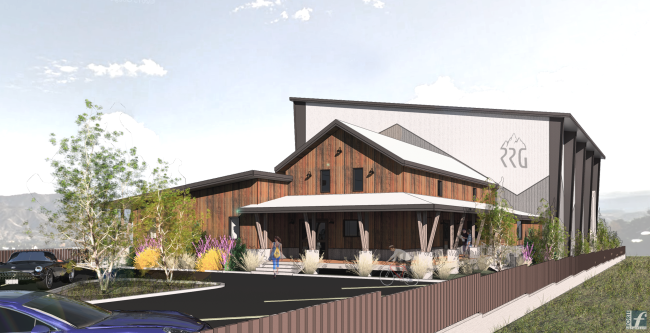 Central Washington has several colleges and universities that have rec center climbing walls. But what makes Riverfront unique is that it is the only commercial climbing facility in the vast, nearly 300 mile-wide section of the state that lies between Spokane on the east and Seattle on the west.
Wenatchee has a relatively small population of 32,701, but is the second largest city in central-northern Washington (the largest, Yakima, has about 93,000).
The Riverfront developers are taking an old barn and turning it into a 10,000 square foot climbing facility with 10,000 square feet of climbing surface. Read more about it on CBJ.
Central Washington has several colleges and universities that have rec center climbing walls. But what makes Riverfront unique is that it is the only commercial climbing facility in the vast, nearly 300 mile-wide section of the state that lies between Spokane on the east and Seattle on the west.
Wenatchee has a relatively small population of 32,701, but is the second largest city in central-northern Washington (the largest, Yakima, has about 93,000).
The Riverfront developers are taking an old barn and turning it into a 10,000 square foot climbing facility with 10,000 square feet of climbing surface. Read more about it on CBJ.
The North
The latest gym to announce is Cascade Climbing Center in Bellingham, WA. This new ground-up 15,000 square foot commercial climbing gym will feature 20,000 square feet of climbing surface. Owner Jon Cohn tells CBJ the gym will also have, “Separate spaces for bouldering, kids programs, and top-rope climbing, as well as a national-class lead wall and competition bouldering wall, both facing a full-length mezzanine, allowing a great layout for competitions. Additionally, the facility will have a full 15 meter speed wall, and full training area, including a system wall, hangboards, campus boards, weights, and aerobic machines.”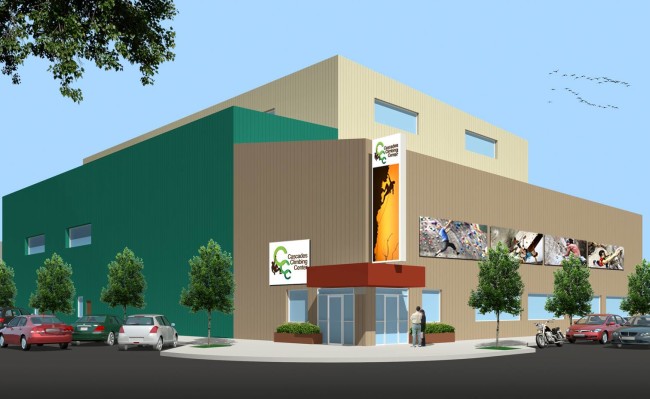
Seattle Metro
Long-time gym operator, Vertical World is bringing some changes to their operations north of Seattle. In Everett, Vertical World declined to renew a lease on their downtown facility allowing a new operator to take over the space, including the existing climbing walls. Re-named Summit Everett, the new owners will re-open the gym after a much needed modernization and remodeling.
The South
Rounding out the Washington gym spree is the Purdy Fun Climbing center in Lacey, WA near the State capital, Olympia. Last summer CBJ wrote about the new gym and the collaboration that is making it possible.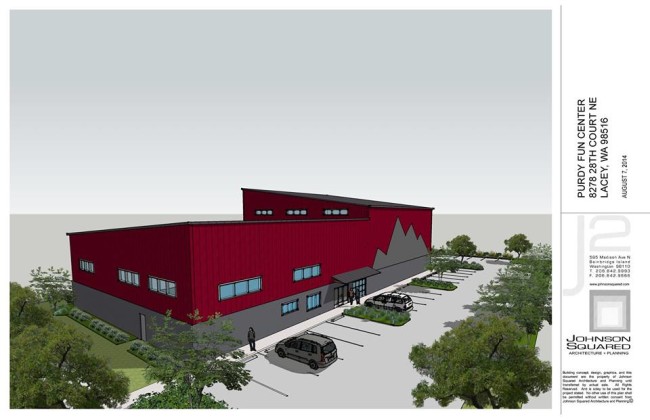
Couples Therapy in a Belay Device
“The EDELRID Ohm is an innovative, new solution for the problems experienced by climbing partners with a significant difference in weight. That is to say the risk for a heavier lead climber if their partner has difficulty controlling their falls and the risk for a lighter belayer if their partner’s falls pull them off the ground, hurling them against the wall. The OHM is an assisted-braking resistor that you install at the first bolt in the safety chain.”




